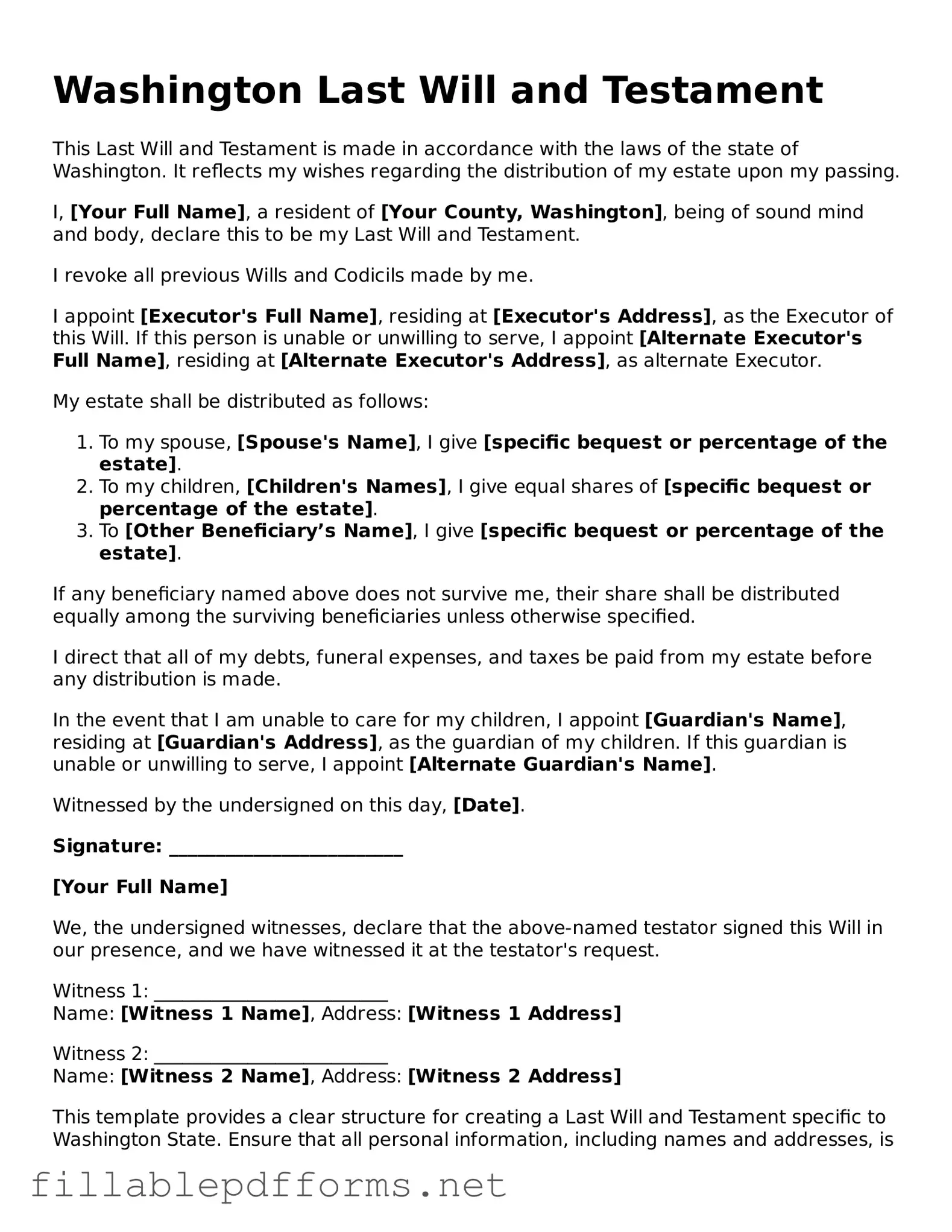Attorney-Verified Last Will and Testament Form for Washington State
A Washington Last Will and Testament form is a legal document that outlines how an individual's assets and affairs will be handled after their death. This form allows individuals to specify their wishes regarding the distribution of property, appointment of guardians for minor children, and selection of an executor to manage the estate. Understanding this document is essential for ensuring that one's final wishes are honored and legally recognized in Washington State.
Launch Editor Here
